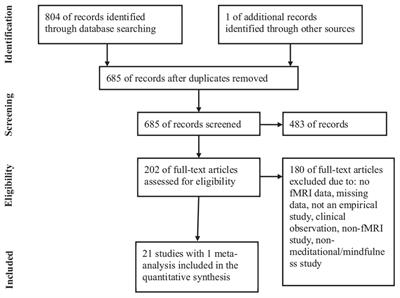A systematic review and activation likelihood estimation meta-analysis of fMRI studies on arousing or wake-promoting effects in Buddhist meditation
Conventional Buddhist texts illustrate meditation as a condition of relaxed alertness that must fend against extreme hypoarousal (sleep, drowsiness) and extreme hyperarousal (restlessness).

Theoretical, neurophysiological, and neuroimaging investigations of meditation have highlighted the relaxing effects and hypoarousing without emphasizing the alertness-promoting effects. Here we performed a systematic review supported by an activation-likelihood estimate (ALE) meta-analysis in an effort to counterbalance the surfeit of scholarship emphasizing the hypoarousing and relaxing effects of different forms of Buddhist meditation. Specifically, the current systematic review-cum-meta-analytical review seeks to highlight more support for meditation’s wake-promoting effects by drawing from neuroimaging research during wakefulness and meditation. In this systematic review and meta-analysis of 22 fMRI studies, we aim to highlight support for Buddhist meditation’s wake-promoting or arousing effects by identifying brain regions associated with alertness during meditation.
The most significant peaks were localized medial frontal gyrus (MFG) and precuneus. We failed to determine areas ostensibly common to alertness-related meditation such as the medial prefrontal cortex (mPFC), superior parietal lobule, basal ganglia, thalamus, most likely due to the relatively fewer fMRI investigations that used wakefulness-promoting meditation techniques. Also, we argue that forthcoming research on meditation, related to alertness or wakefulness, continues to adopt a multi-modal method to investigate the correlation between actual behaviors and neural networks connected to Buddhist meditation. Moreover, we recommend the implementation of fMRI paradigms on Buddhist meditation with clinically diagnosed participants to complement recent trends in psychotherapy such as mindfulness-based cognitive therapy (MBCT).
Read the full article at the original website
References:
